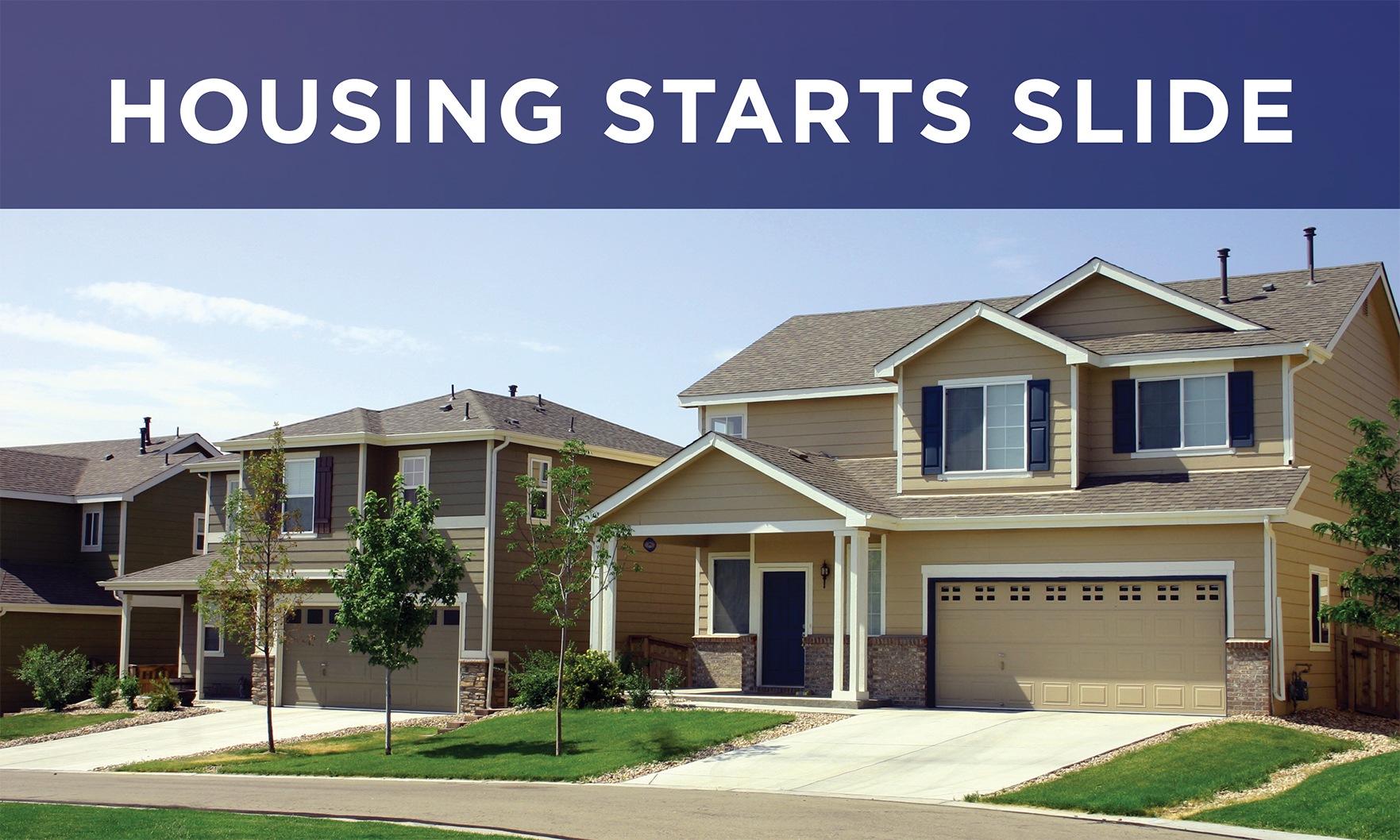Housing starts slid in November as builders moved to complete homes already underway and cut back on seeking permits for new construction.
Housing starts, which include construction of new single-family and multifamily residences, declined 0.5% month over month to a seasonally adjusted annual rate 1,427,000 units, the U.S. Census Bureau and the U.S. Department of Housing and Urban Development said in a press release. Year over year, starts were down 16.4%.
New single-family home starts fell 4.1% from October’s revised annual estimate to 828,000, while multifamily starts rose 4.8% to 584,000. On a yearly basis, the rate of single-family starts was down 32.1%, while multifamily was up 24.5%.
Permits, a leading indicator of future new-home supply, fell 11.2% month over month and 22.4% year over year to 1,342,000 units, while housing completions jumped 10.8% month over month and 6% year over year to an annual rate of 1,490,000 in November.
Compass President Neda Navab said the decline in permitting — one of the largest monthly drops of the last decade — and increase in completions could have “worrisome” long-term consequences for housing supply.
“It’s not easy for builders to balance the short-term pullback in demand with the long-term need for more housing nationwide, but on the surface, it seems a more reasonable strategy would be to pull back on short-term starts and keep the longer-term permit pipeline as full as possible,” Navab said. “That builders have instead taken the opposite path — clearing out those homes already permitted, but leaving the cupboard barer for tomorrow — does not bode well for a nation that remains under-built.”
First American deputy chief economist Odeta Kushi said the month’s figures reflect waning homebuilder confidence, which has fallen for 12 consecutive months.
“Housing demand is weakening, while builders continue to face higher costs and supply-side headwinds,” Kushi said. “As builders pull back on starting new projects, they will have greater opportunity to bring to market the backlog of homes in their pipelines that are already under construction.”

